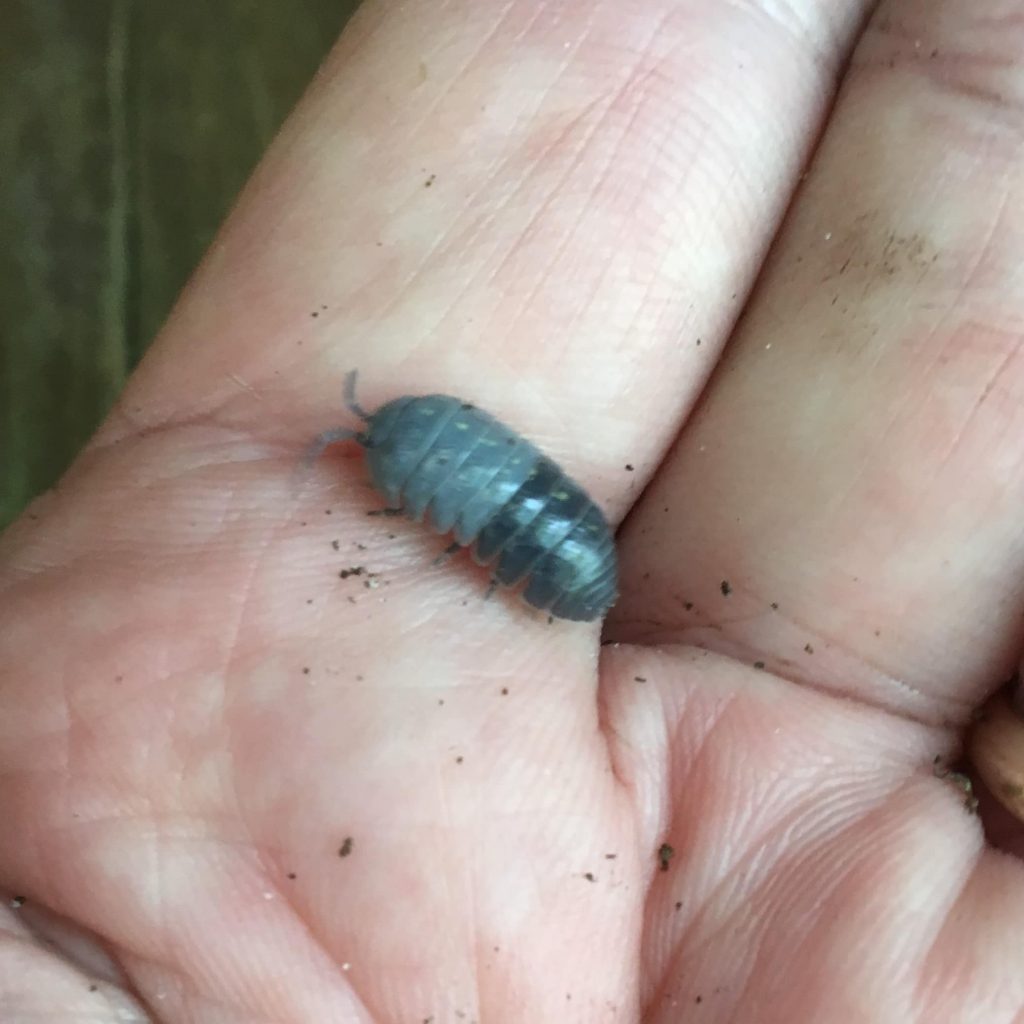There is something about a Rolly Polly that makes me stop and look every time I see one. They are just that cool of a creature I guess, but it has been a life-long habit that I always enjoy. Although the slate gray colored creatures are easily seen, every so often a two-toned one appears. Either the front or back half of the creature is a lighter gray color. What is with that?
These two-toned individuals are not different from the others. They are just in the process of molting their outer covering or exoskeleton: a process that allows them to grow. The interesting thing about this in Rolly Pollies is that they do in in two stages: front and back halves. As the old covering is being replaced and dislodged from the new one beneath, the color appears lighter: in this case a lighter gray. The underlying new exoskeleton remains soft until the old cover falls off.
In the group of organisms to which Rolly Pollies belong (the isopods), this process is known as biphasic molting (two phases). But why not molt all at once like the rest of their Arthropod (jointed-legged organisms) relatives, like crustaceans, insects and spiders? The answer is in the ancestry of the group of crustaceans to which Pollies belong: the isopods, that include a large number of marine and some freshwater species that are ectoparasites (attached on the outside) on fish.
Once a parasitic isopod finds a suitable host fish, it is beneficial to stay attached. If it molted all at once, it would have to drop off and find another fish. In the evolutionary history of this group of crustaceans, a two-phase process for molting allows individuals to stay attached during the process of growing. As it grows and needs to molt, the back half of the creature molts first. Soft at first, the new exoskeleton hardens over time to be able to establish a strong attachment before the front half follows through with its molt.
Although Rolly Pollies are not aquatic or parasitic, they have retained this two-phase process for molting. They are not dying or hurt. Their two-toned appearance is just a reflection of their ancestry. A bit of trivia perhaps, but very cool all the same.
Hope to see you in our great outdoors!




